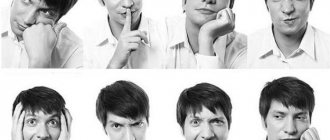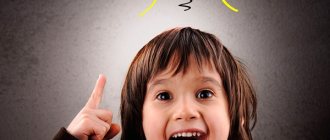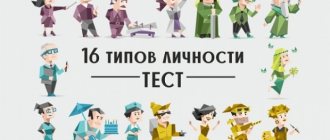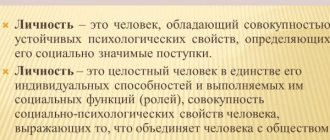Crowd psychology is a branch of psychology that studies the behavior of groups of people, identifying special mechanisms of functioning and changes in a person’s personal characteristics, as well as identifying differences between behavior inside and outside the group.
The psychology of crowd behavior was taken into a separate field, since in such a structureless society, each individual has similar emotional reactions that are manifested in other participants. It is on the basis of these mechanisms that the possibility of dissolving individuality is born, and the laws of the mass always prevail over the internal aspirations of a person (for example, intelligent people in a crowd allow themselves to behave basely, and those capable of criticism cease to adequately assess the world, etc.).
Le Bon studied the psychology of the crowd, basing his theory on the fact that the mechanism of emotional contagion (transmission of a certain type of emotions, states, thoughts) among a mass of people occurs similar to the epidemiological spread of a virus. Accordingly, the more people are involved in the interaction, the stronger the influence and the faster the spread of emotional affect. The scientist explained this effect of crowd psychology by the fact that personal responsibility is dissipated and, in a feeling of complete anonymity, people are capable of demonstrating what they would previously have corrected in their behavior.
The concept of crowd psychology implies people united not by a common goal, but only by an emotional state. This is always a lack of structure, otherwise we are talking about a team or an organized group that has a common goal and a response system in accordance with roles.
What unites a crowd is always only emotional similarity, so such clusters can appear in places of cultural interest or ideological meetings (concerts, rallies, catastrophic incidents, etc.).
Being caught up in common feelings no longer gives a person the opportunity to react differently, and the priority of the desires of the majority is genetically fixed. Because only together is it better to hunt or achieve goals, and those who went against the general mood risked remaining an outcast and dying without the support of the pack. That is why many now experience uncomfortable feelings of fear and anxiety when they express resistance to the majority - such behavior is fixed as threatening death.
Crowd types
The psychology of crowd management is based on an understanding of the different types of crowds and the leading mechanisms of influence on them. Different crowds of people may differ in the activity of the participants themselves, i.e. These are either direct active participants in the events, or the public observing what is happening. Active participants are always more involved, more easily susceptible to external influence and control, while those who just came to watch are less active and retain more individuality. A support group at a concert is always able to quickly join the fight for defending the name of a favorite than those sitting in the audience.
Depending on the activity, crowd control also changes, according to which several more types are distinguished. An absolutely uncontrollable collection of people arises spontaneously; it has neither a goal, nor a leader, nor organizational mechanisms. In terms of the power of destructive consequences, this is the most terrible type of crowd, since there are no mechanisms of influence.
An uncontrollable spontaneous crowd occurs in public places (stadiums and subways, areas of natural disasters or mass celebrations). These people have different goals, ending up together only by chance. People who obey specific commands of one leader belong to the led crowd, where one person or a small group is able to regulate the emotions of a large crowd of people, adjust their motivation and lead them in the right direction.
An even more manageable crowd is an organized one, which has not only a clear leader capable of changing its mood and direction, but also common goals and pre-agreed meeting places and the duration of planned actions. This is a well-organized movement, characterized by maximum efficiency in its actions and achieving any goals thanks to a clear internal structure and common interests.
In terms of emotional content, the crowd differs and changes in the same way as the emotional and mood sphere of the individual. This could be an aggressive group of people rebelling against an unsatisfactory order, or it could be a crowd of people paralyzed by fear or panic as a result of disasters that have occurred.
Euphoric gatherings of people occur at concerts or peaceful rallies, where the main driving forces are emotions of pleasure and joy. Often euphoria comes into contact with expression, where the main thing is the unhindered and vivid expression of feelings. An expressive crowd unites people into a group based on a common attitude towards someone's event, while a conventional crowd unites on the basis of a common cognitive interest.
Another point of difference between the types of crowd is its homogeneity. A heterogeneous crowd is most often born where meetings take place spontaneously, and it is usually anonymous - there no one knows anyone and all personalities are erased into one. Where people gather intentionally, most often the meeting is personalized, the personalities, names, regalia, or at least the larger community represented by the participants are known. Options if gatherings united by interests or ideas imply greater homogeneity. There is also an artificial division of people into classes and sects, ages and income levels - all this came from the scientific world and is presented by the crowd only by prior agreement on a meeting or joint action (church service, rally, celebration, etc.).
Introduction
In the twentieth century, the role of the crowd in all spheres of social life grew significantly. This is primarily due to the concentration of people. The world is experiencing an unprecedented increase in population concentration. Now every day we find ourselves in dense crowds of people: on buses, subways, in large stores. in city markets. This cannot but affect our behavior. In past centuries, most people encountered such crowds very rarely. The 19th century French psychologist J. Le Bon wrote: The century into which we are entering is likely to be the era of the crowd. Mass processions, rallies, and street concerts often end tragically. The experience accumulated by life safety specialists allows us to give some recommendations to participants in such events.
The development of television and advertising has created powerful means of simultaneously manipulating the behavior of millions of people. They can simultaneously receive information, pushing them to the same type of actions, causing irrational behavior. Irrational behavior is the opposite of rational behavior. If the first is characterized by linking goals with perceived interests, constructing an action plan based on calculating the balance of possible achievements and costs, then irrational behavior is devoid of this. It is based on psychological mechanisms that are only indirectly related to sober calculation.
In everyday life, a crowd is understood as something amphora and chaotic. In psychology, on the contrary, a crowd is seen as the opposite of a random gathering of people. Recently, the crowd has become, it is customary to consider it as a special living organism. Its cells are individuals, thinking, independent individuals... Until they fall into the crowd! Like a fantastic alien animal, these cells either gather together, then a living organism is formed from the crowd, then they scatter, and this organism ceases to exist.
Psychological properties of the crowd
The psychology of the mass of the crowd is built mostly on unconscious processes that arise as a result of the excitation of certain brain centers under the influence of changes in important value categories. Large-scale riots begin when for many people the opportunity to earn money was affected, an organization for the reconstruction of something appears after the destruction of important monuments or buildings - society has always united in order to jointly cope with what one person cannot overcome.
Communication in the crowd, through which preparatory influence is exercised, has a special property. No one succumbs to the external influence of those who do not convey ideas close to him or follow the opposite opinion.
To enter into another person’s picture of the world, either consciously or accidentally, completely different communication mechanisms are used than direct conversation, which is typical for dialogue. Mass communications play an important role, covering a large audience - newspapers, the Internet, television and other media. These are officially recognized channels of interaction between large masses of people; unofficial ones include gossip and rumors, as well as any sources where the subjective opinion of a person plays a big role, and not the actual event. The main property of the crowd is that information and opinion enter the consciousness, similar to a vinaigrette - there are rumors, and the latest news and theories of feature films.
The crowd is unconscious, and the people in it act at the level of basic instincts. Here impulsiveness plays a big role, being caught up in emotions, instead of a reasonable analysis of the situation, and the one who, being in the crowd, tries to criticize what is happening, to include a rational approach, will either leave the general structure or be trampled by it.
The herd instinct, which serves to ensure that the entire species survives, is key - it is necessary in extreme situations of war, famine, defense, but is also included for other general purposes. Due to instinctive behavior, the variability of a person’s reactions is narrowed, and he saves time on everything, acting more intuitively. The actions of the crowd can only be restrained or redirected by a team, and the authority of the leader must be absolute.
Being in a large group, a person thinks mainly in images, his imagination works stronger than when alone or in dialogue. There are no moments of reflection or criticism; images imposed from the outside are perceived as real, while they are categorically simple. The larger the crowd, the more simple theses and images are understandable; analysis of complex or graded concepts is simply not available. The main thing in such images is always not truth and objectivity, but desirability, as a result, those who want delicious apricots will follow the one who says that they are ten meters away, without thinking about the discrepancy between the climate and what they themselves see at this distance only emptiness.
The crowd is categorical and conservative, there are no doubts about the truth, there is no patience and tolerance for other points of view, but there is persistence and forceful pressure. New alternative ideas can only be accepted if they are charismatically expressed by the former leader, but in other cases the majority will strive to preserve the old social order, as a symbol of security. Hence the increased suggestibility of the crowd, since people in it do not distinguish between half-tones - they either accept the idea completely (which means additional necessary points can be included there) or categorically reject it.
Crowd: definition and nature of its formation
For the first time, the famous French sociologist Gustave Le Bon tried to give a scientific explanation of the crowd phenomenon at the turn of the 19th and 20th centuries. His first articles on this topic were published in Revue Scientific in 1885, and then his book “The Psychology of Crowds” was published, after which the ideas began to gain popularity in scientific circles. The very problem of studying the crowd has become the object of attention of many scientists, including domestic ones (V. M. Bekhterev, G. M. Andreeva and others).
The concept of “crowd,” by the way, became part of social psychology when mass revolutionary unrest occurred in the world (again, this is the turn of the 19th and 20th centuries). For this reason, at first the crowd was understood as poorly organized protests of the proletariat against the ruling class.
Currently, psychology interprets the term “crowd” as follows: a crowd is an unstructured and unorganized collection of people united by a single object of attention and the same feelings regarding it. One of the hallmarks of a crowd is the absence (or loss) of a conscious and clear common goal.
A classic example of a crowd in social psychology is a crowd of people during any transport accidents, mass events, pickets, protests, rallies, natural disasters, military exercises, etc.
Surely you yourself have been a member of a crowd or observed this phenomenon at least once in your life. Actually, it is simply impossible to ignore the so-called crowd effect, because people who find themselves in a crowd almost instantly convey its mood and behavioral reactions. They join this mass and become part of it, even if this goes against their own principles and desires.
The behavior of a crowd can be very unpredictable, and its mood can pose a potential threat to individuals and society as a whole, as well as to the infrastructure of populated areas (organizations, buildings, cultural objects, etc.) By the nature of the formation of a crowd, it can be quite easily determined compound. Typically the crowd consists of:
- Instigators . This is the core of the crowd. It is made up of people who form it, competently and correctly configure it and use it for specific purposes.
- Participants . These are people who have joined the crowd and take an active part in its actions. Easily suggestible and sympathetic people (with a heightened sense of justice), ordinary people and people who do not have a specific goal for their current actions can be influenced by the crowd. Let us note that the latter category often contributes to the creation of mass participation, but does not take active part in the activities of the crowd. The most dangerous participants are people who use the crowd to splash out negative energy, anger, and aggression.
Gustave Le Bon's research made enormous contributions to crowd psychology. It is largely thanks to them that this scientific direction today identifies two main mechanisms of its formation. The first is the growing emotional contagion, and the second is rumors. The process of crowd formation itself occurs in several stages:
- Formation of the core of the crowd . Despite the fact that a crowd arises spontaneously, its formation is impossible without a core. Such a core may be instigators who are aware of their actions and pursuing specific goals, or some event (incident). Then banal curiosity begins to act, attracting even more people to the center. Interest leads to the fact that people join the crowd, and there can be any number of such “infusions”, and each of them fuels emotions, which is why people are attracted again and again.
- Whirling . When a crowd has formed, tension begins to accumulate within it, which is why people’s perception of any external influences intensifies. A circular reaction occurs and the excitement becomes stronger. This leads to the fact that the entire mass of people is ready to react with lightning speed to incoming information.
- The emergence of a new object of attention . The processes occurring within the crowd (gossip, gossip, conversations fueled by the intensity of feelings) change the reason that served as the source of the crowd, i.e. core. The image created by the people themselves from the crowd comes into play. Everyone accepts it, and therefore it captures people’s attention and feelings, and also sets the direction for further actions.
- Activating individuals . As one might expect, the tension accumulated within the crowd requires release. It is achieved through additional stimulation of crowd participants. To do this, their imagination is fueled and suggestion is made. The result is certain actions of people, and they may well defy logic and be unsafe. The instigators or a specific leader add fuel to the fire. In this way they strive to achieve their goal.
It is important to note that an already formed crowd can be very dangerous, especially if it is controlled (and contained within) by aggressive people. The consequences of the actions of such a crowd can be the most destructive. It is extremely difficult to curb an uncontrollable crowd. But let's not exaggerate, but watch a short video about how the behavior of even a small number of people can affect the behavior of one person.
Stages of crowd formation
The emergence of even a random and inhomogeneous crowd never occurs without social conditioning and occurs in stages. Each mass of people has a core that holds them all together - these can be specially appointed or informal leaders, emotionally significant people or those who best navigate the situation. The initial core may arise from logical motives, so in accidents people come together to provide help, while there are victims and those who have medical skills or can help organize movement to the hospital. Then to these people are added those who are caring, capable of participating, or seeking protection. It is from the moment other individuals join that the crowd begins to enter into a circular movement.
When the crowd begins to swirl, a stage of increasing emotions, increasing affect occurs, and the surrounding society begins to divide into polar clans. In this process, there are always people whose opinions enter the psyche of others without any criticism, as a result of which the tendency to commit uncontrollable, spontaneous, dangerous actions increases significantly. Here there is a disappearance of personal responsibility, the dissolution of one’s personality and the acquisition of anonymity.
After a large community has been formed with cohesive interests, a new common object of unity is formed based on the different opinions expressed. If at first it was a natural disaster, then a joint discussion may give rise to a search for or blame on specific people or structures for what happened. Attention shifts, but a completely new and absolutely common goal appears, born from the minds of the participants in the process of interaction. At this stage, people are as united as possible and then the need for a new core formation arises.
Activists, leaders, instigators or provocateurs appear to lead the crowd. Being in it, they can shift emotional accents, through which they can guide people’s actions. It is not necessary to understand how to lead a society and strive for reformation into something good. These could be immature individuals with borderline disorder, psychopaths and manipulators, children and extremists - the main thing is to be able to emotionally shake up the crowd, the goal in this context is secondary.











